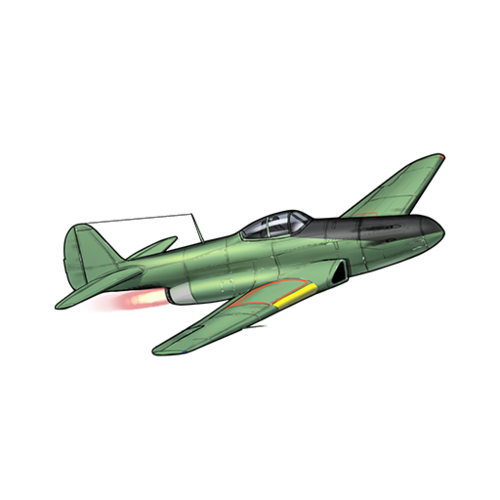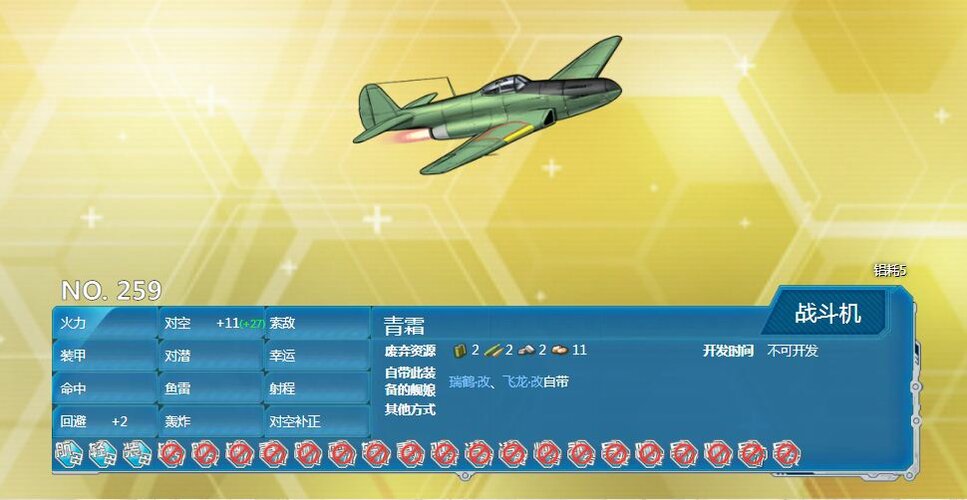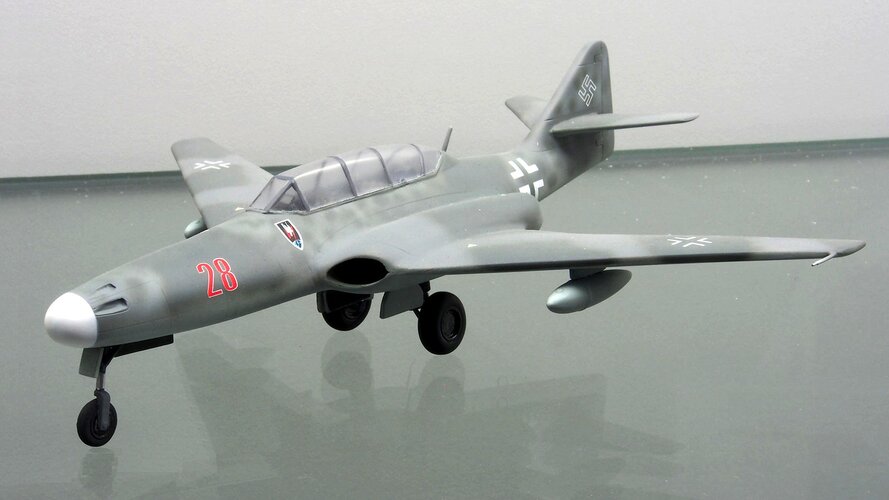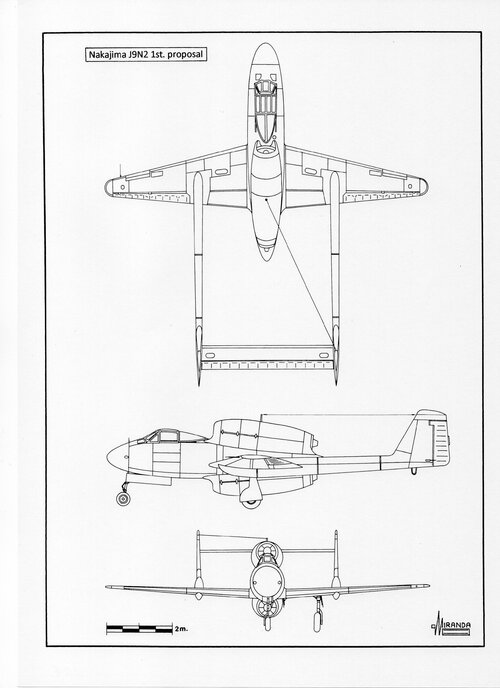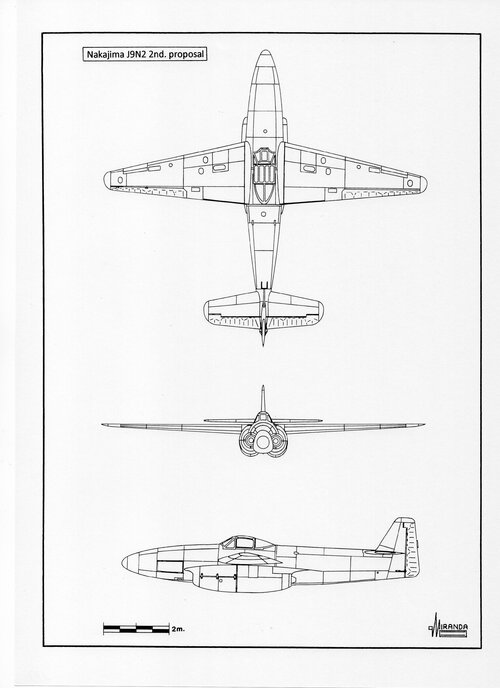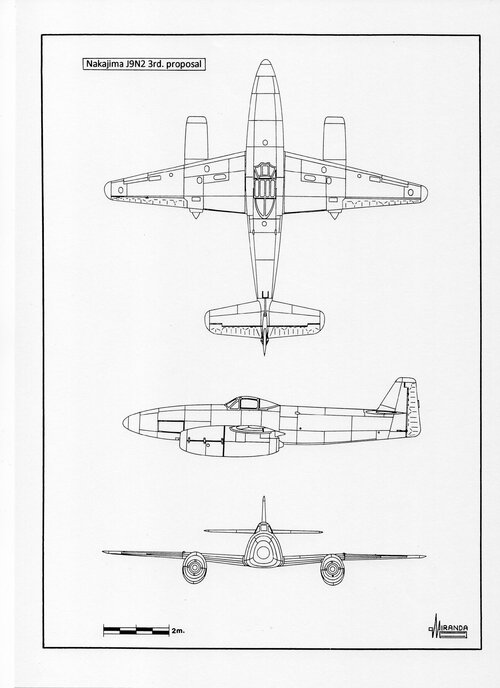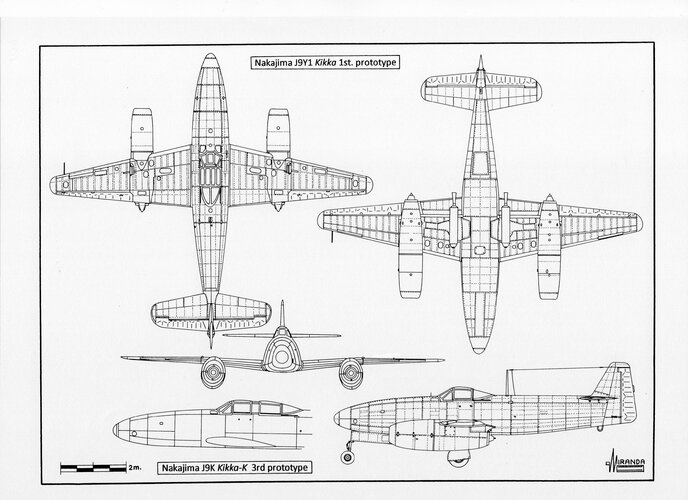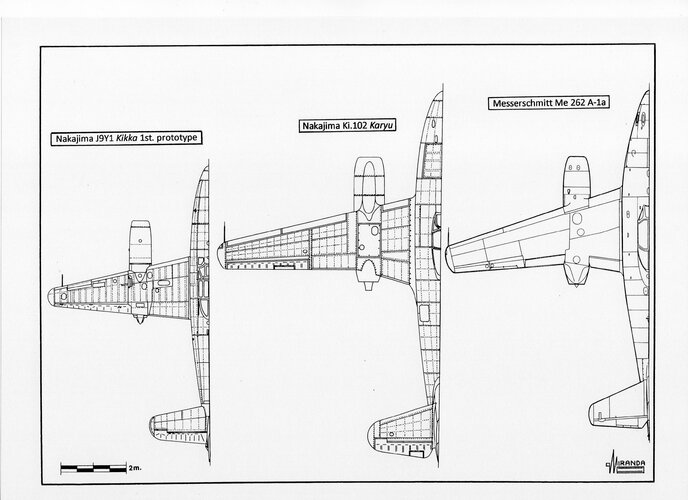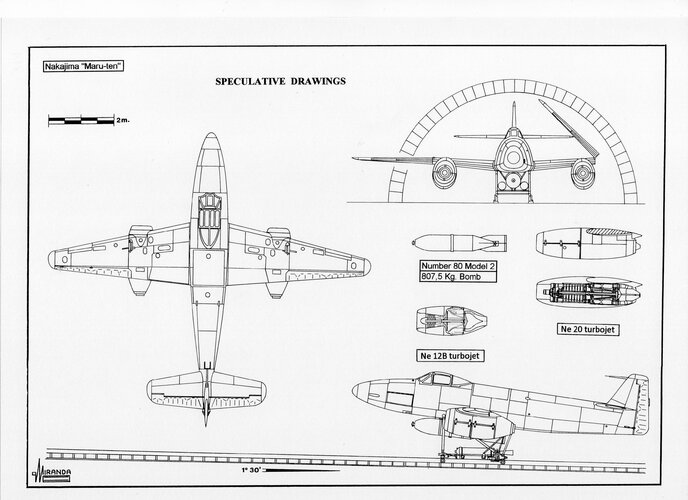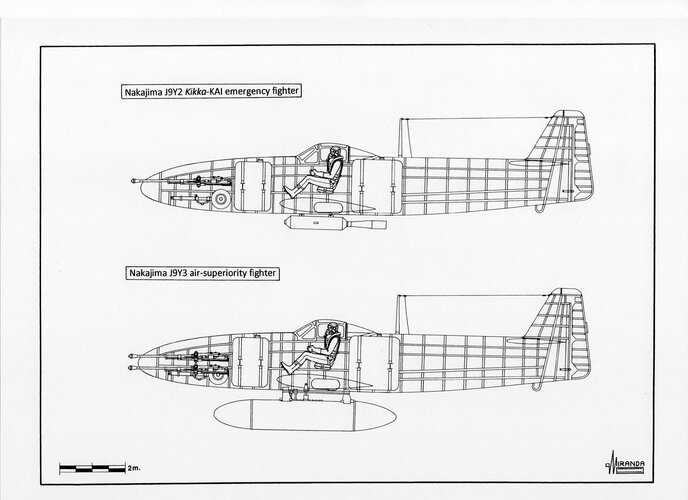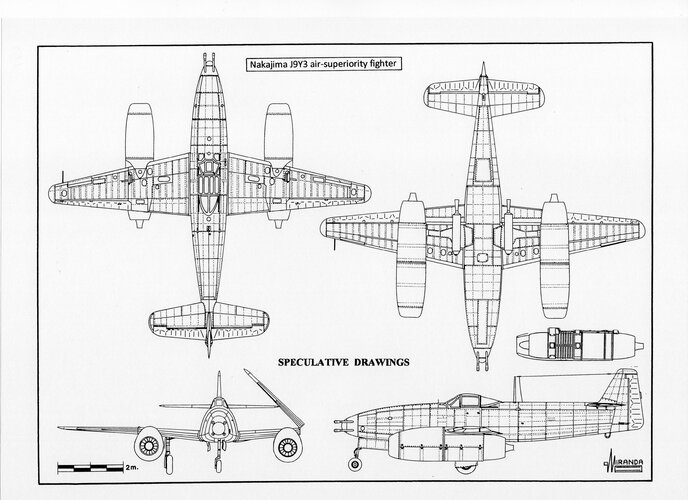You are using an out of date browser. It may not display this or other websites correctly.
You should upgrade or use an alternative browser.
You should upgrade or use an alternative browser.
Fake Japanese Single Engine Jet Fighter
- Thread starter Mavrick5
- Start date
I found the information here:
https://profilbaru.com/ja/日本製航空機の一覧
https://profilbaru.com/ja/日本製航空機の一覧
- Joined
- 11 March 2012
- Messages
- 3,016
- Reaction score
- 2,696
Looks fictional and loosely based upon Lockheed’s P-80 Shooting Star.
P-80 was the USAAF/USAF’s first operational jet fighter and flew a few combat missions at the start of the Korean War.
Since the USAAF was highly secretive about their shiny new jet technology, we doubt if the Imperial Japanese had a single clue about what sorts of new engines Brits (e.g. Whittle) and Americans (e.g. General Electric) we’re developing during WW2.
P-80 was the USAAF/USAF’s first operational jet fighter and flew a few combat missions at the start of the Korean War.
Since the USAAF was highly secretive about their shiny new jet technology, we doubt if the Imperial Japanese had a single clue about what sorts of new engines Brits (e.g. Whittle) and Americans (e.g. General Electric) we’re developing during WW2.
klem
I really should change my personal text
- Joined
- 7 March 2015
- Messages
- 618
- Reaction score
- 1,247
F.L.
ACCESS: Top Secret
It's a nice design, inded.Hi Guys
I have come accross this plane on the web. I got the following picture on Google. Real or not?
- Joined
- 29 July 2009
- Messages
- 1,529
- Reaction score
- 1,546
perttime
I really did change my personal text
- Joined
- 30 March 2013
- Messages
- 271
- Reaction score
- 233
Looks like the images are from some kind of a game. I got the impression that the aircraft in the game are from late/post WWII time.
There was a reference to a Japanese Wikipedia page:
A "paper project"?
 ja.wikipedia.org
ja.wikipedia.org
 ja-m-wikipedia-org.translate.goog
ja-m-wikipedia-org.translate.goog
There was a reference to a Japanese Wikipedia page:
A "paper project"?
陸軍単発噴進式戦闘機 - Wikipedia
陸軍単発噴進式戦闘機 - Wikipedia
Hello,
This aircraft, named in the website : 陸軍単発噴進式戦闘機 was done for a Japanese game, named Warship girls (戦艦少女R).


However, I found some unverified background on the referring Wiki :
1944年末、陸軍航空工廠はMe 262に匹敵する性能を持つジェット戦闘機の試作を命令した。この機体の開発では陸軍航空工廠内の2つの開発班による競合設計が行われており、双方ともに設計は機首に大口径機関砲を集中配置できる低翼の単座機となっている。一つは流線型の胴体の後部下面にエンジンを配置した設計案、もう一つは、双垂直尾翼を持ち、ずんぐりとした胴体の上部重心位置にエンジンを配置した設計案だった。この2つの設計案は比較検討され、第一案が採用された。その後は試作準備が進められたが、基本設計段階で太平洋戦争が終戦を迎えたため開発中止となった。
In late 1944, the Army Aviation Arsenal ordered a prototype jet fighter with performance comparable to the Me 262. During the development of this aircraft, two design teams belonging to the Army Aviation Arsenal prepared designs ; both designs were low-wing single-seat aircraft that can carry centerline large-caliber cannons with a nose gunport. One of these designs showed a simple fuselage with a conformal belly engine, the other design had a twin vertical tail, with an engine located at the upper center of gravity of the fuselage. These two design proposals were compared and finally the first proposal was adopted. Prototype preparation started, but development that was still at a basic design stage was canceled due to the end of the Pacific War.
Cheers,
Radium
This aircraft, named in the website : 陸軍単発噴進式戦闘機 was done for a Japanese game, named Warship girls (戦艦少女R).
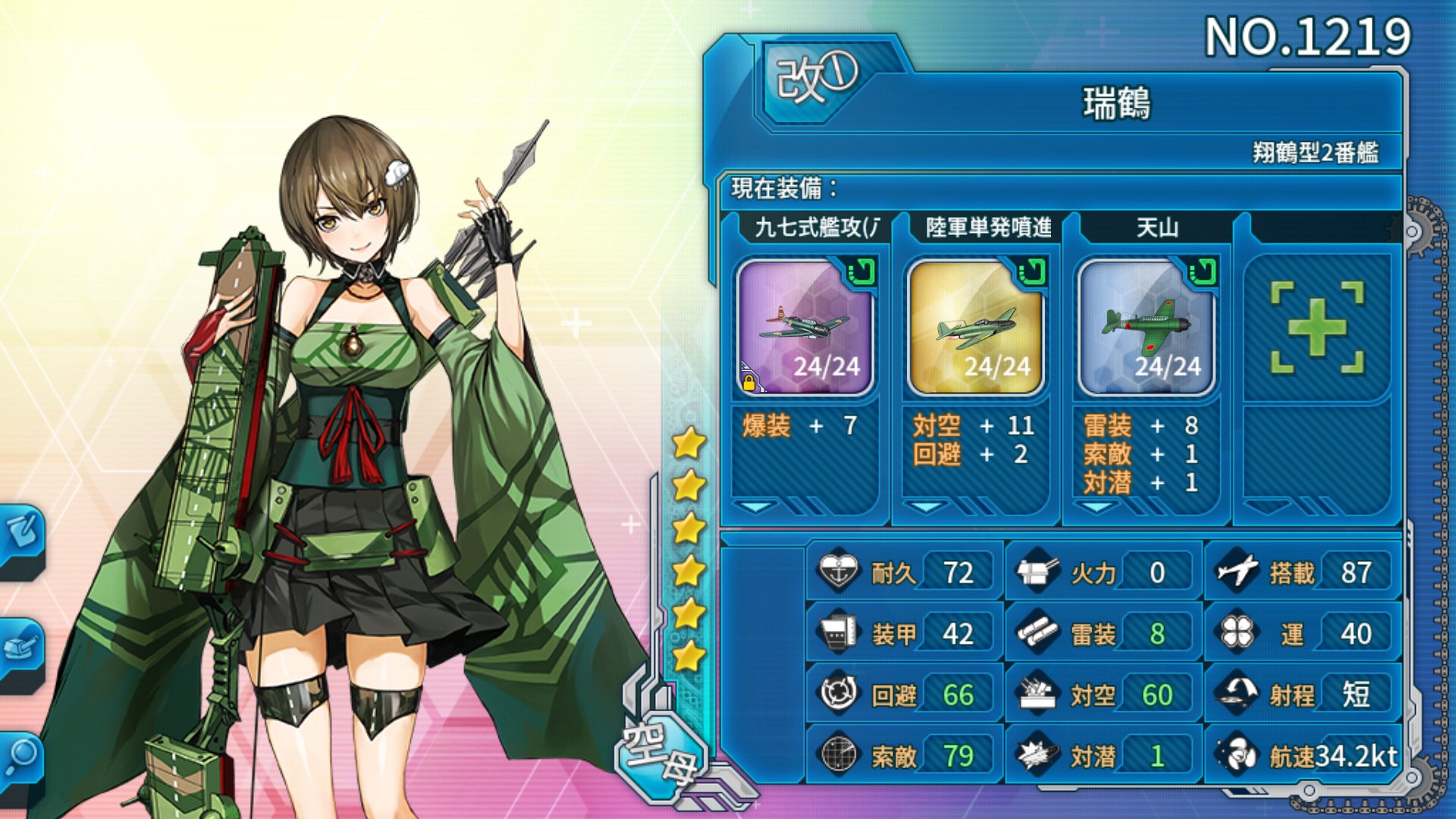
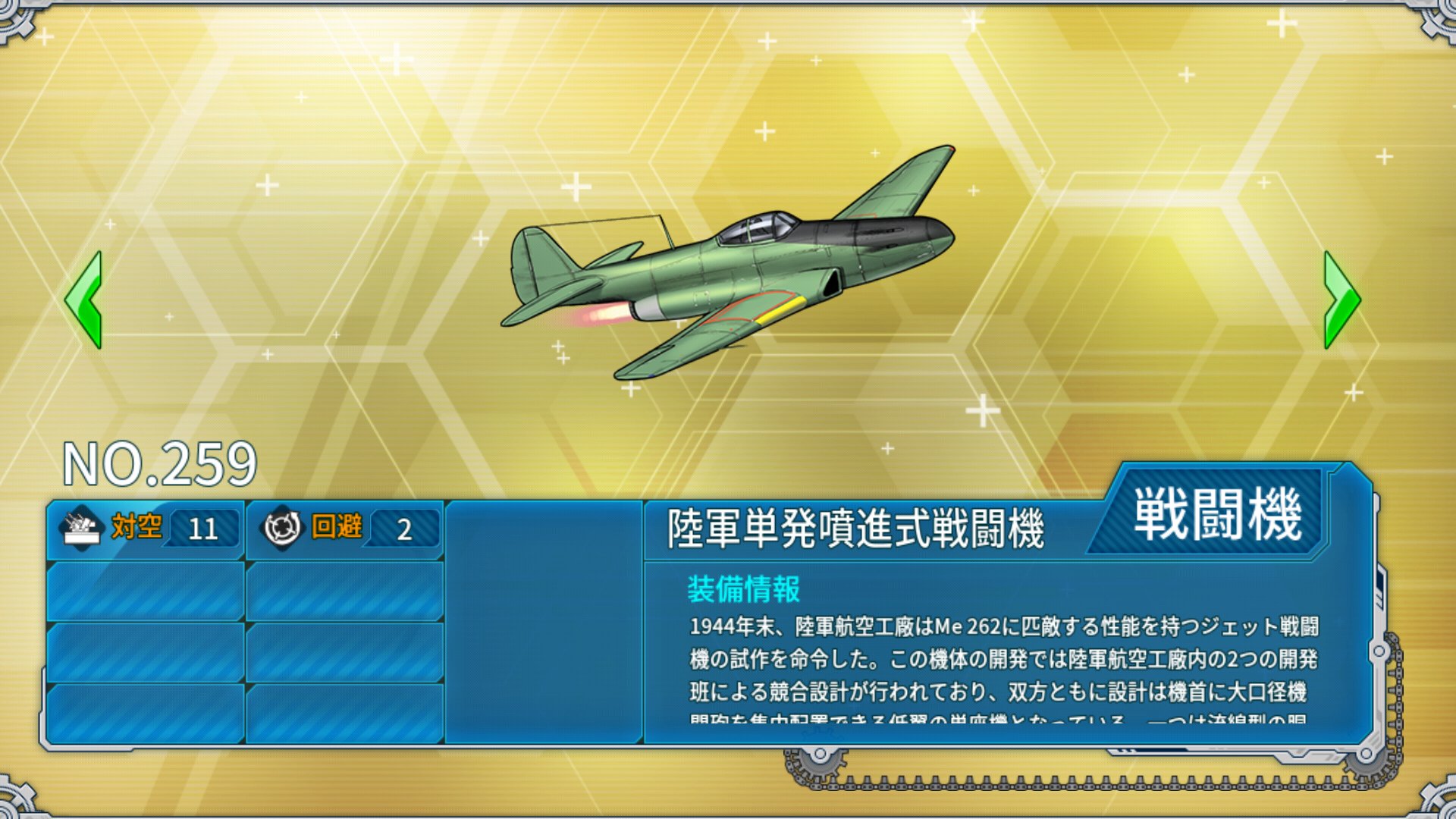
However, I found some unverified background on the referring Wiki :
1944年末、陸軍航空工廠はMe 262に匹敵する性能を持つジェット戦闘機の試作を命令した。この機体の開発では陸軍航空工廠内の2つの開発班による競合設計が行われており、双方ともに設計は機首に大口径機関砲を集中配置できる低翼の単座機となっている。一つは流線型の胴体の後部下面にエンジンを配置した設計案、もう一つは、双垂直尾翼を持ち、ずんぐりとした胴体の上部重心位置にエンジンを配置した設計案だった。この2つの設計案は比較検討され、第一案が採用された。その後は試作準備が進められたが、基本設計段階で太平洋戦争が終戦を迎えたため開発中止となった。
In late 1944, the Army Aviation Arsenal ordered a prototype jet fighter with performance comparable to the Me 262. During the development of this aircraft, two design teams belonging to the Army Aviation Arsenal prepared designs ; both designs were low-wing single-seat aircraft that can carry centerline large-caliber cannons with a nose gunport. One of these designs showed a simple fuselage with a conformal belly engine, the other design had a twin vertical tail, with an engine located at the upper center of gravity of the fuselage. These two design proposals were compared and finally the first proposal was adopted. Prototype preparation started, but development that was still at a basic design stage was canceled due to the end of the Pacific War.
Cheers,
Radium
perttime
I really did change my personal text
- Joined
- 30 March 2013
- Messages
- 271
- Reaction score
- 233
The Wikipedia article lists a couple of books as references.
From Google translation:
From Google translation:
- Ryusuke Ishiguro , Tadeusz Januszewski , "Special Attack Aircraft and Flying Bombs of the Japanese Army and Navy," Dai Nihon Kaiga , 2011, pp. 103. ISBN 978-4-499-23048-3 .
- Akira Sahara , Japanese Army Prototype/Planned Machines 1943-1945, Ikaros Publishing , 2006, pp. 76-77. ISBN 978-4-87149-801-2 .
Nakajima Kikka/Kitsuka
Presented to the Kaigun Koku Hombu on 14 September 1944, as a candidate to the Kokoku Heiki No.2 project, the J9N1/MXN1 (speculative designations) Maru-Ten was a suicide bomber armed with one (fixed) Number 80 Model 2 bomb of 807.5 kg. Lacking an undercarriage, it took off from a cart propelled by two Toku-Ro.1 Type 2 rockets running over 200 m of rails.
As with the projected Ohka 43-Otsu project of Kugisho, the Maru-Ten was armed with two 13 mm Type 3 machine guns to defend from the Allied fighters. It also had foldable wings that could be hidden in caves and railroad tunnels. On September 1944 the IJN issued the ‘19-shi specification’ calling for a special attack bomber with 693 kph max speed and 350 take-off run when using two 450 kgf RATOG bottles.
In November 1944, after a series of tests made with a Betty bomber, it was concluded that the Ne-12B centrifugal turbojet, with only 320 kgf static thrust, did not produce anywhere near the power required to propel this aircraft that had a range of just 204 km, due to its high rate of fuel consumption of 510 kg/h.
On 9 December, the Kaigun Koku Hombu decided to modify the project ‘19-shi special attack bomber’ into the 620 kph ‘anti-invasion’ fast bomber J9N2/MXN2 (speculative designations), propelled by two Yokosuka/Kugisho Ne-20 axial turbojets with 475-490 kgf static thrust, tricycle type landing gear, armoured windshield, automatic extinguisher devices and two Type 99, 20 mm cannon, but the weight of the (launchable) bomb had to be reduced to 500 kg.
With the possibility of using the Ne 20 axial turbojet, with only 62 cm of diameter, Nakajima proposed to Kaigun Koku Hombu three possible configurations for the ‘anti-invasion’ fast bomber. The first proposal consisted of a twin boom airframe with two Ne 20 turbojets mounted on the upper and lower sides of the fuselage. In the second proposal, they were located under the wing roots; the third proposal was a variant of the Maru-Ten with the engines mounted under the wings. The mock-up was presented to the IJN on 28 January 1945, receiving the official designation Kikka/Kitsuka.
The first Nakajima/Yokosuka Kikka (J9Y1 speculative designation) prototype was based upon the third proposal and flew for the first time on 7 August 1945. To gain some time, it was built with the main landing gear of an A6M5 Zero-Sen and the tailwheel of a P1Y Ginga as a nose wheel.
First prototype technical data
Wingspan: 10 m, length: 9.25 m, height: 3.05 m, wing area: 13.2 sq. m, max weight: 3,950 kg, max speed: 677 km/h, service ceiling: 10,700 m.
The prototype was used as the basis for an emergency fighter project (J9Y2 Kikka-KAI speculative designation) powered by two Ne 20-KAI turbojets with 570-650 kgf static thrust and armed with a Type 5, 30 mm cannon. The wing area was extended to 14.51 sq. m for a 12,300 m service ceiling and a time to climb to 10,000 m of 20 minutes. The estimated maximum weight for this version was 4,152 kg and the maximum speed of 785 km/h.
The possibility of using the new Ishikawajima-Shibaura Ne 130 turbojets, with 900 kgf static thrust, allowed the design of an air-superiority fighter (J9Y3 speculative designation) with combat flaps and leading-edge slots to improve maneuverability, armed with four Type 5, 30 mm cannon. The protection for the pilot consisted of one 70 mm thick armored windshield and 12 mm steel plates at the back of the seat. The two fuselage fuel tanks of 330 and 425 liters were protected with 22 mm thick leak-proof rubber. The estimated maximum weight for this version was 4,232 kg and the max speed of 713 km/h
On 13 June 1945, the Kaigun Koku Hombu decided the mass production of the special attack bomber and of the emergency fighter. At the time of Japanese surrender a second prototype was completed and 18 pre-production airplanes were in various stages of assembly. The third prototype Kikka-K was a two-seat trainer/reconnaissance variant (J9K speculative designation) with 721 km/h estimated max speed.
Attachments
- Joined
- 26 May 2006
- Messages
- 32,689
- Reaction score
- 11,918
But it's here,in real section J9N;
@Justo Miranda
Your work is incredible ! I love your drawings ! Thus, I wonder if Kikka would have ever got enough power to take off from a carrier... I don't ever read a catapult plan for IJN warships !
Your work is incredible ! I love your drawings ! Thus, I wonder if Kikka would have ever got enough power to take off from a carrier... I don't ever read a catapult plan for IJN warships !
Source:@Justo Miranda
Your work is incredible ! I love your drawings ! Thus, I wonder if Kikka would have ever got enough power to take off from a carrier... I don't ever read a catapult plan for IJN warships !
Ohh ! You are the author of this book ?
martinbayer
ACCESS: Top Secret
- Joined
- 6 January 2009
- Messages
- 2,374
- Reaction score
- 2,100
The name on the cover page should have been the first clue... 
This is from a Chinese mobile game "Warship Girls R". The outline of the aircraft is totally fake, but its motif is from the "IJA Single Engine Jet Fighter", for the description in the game resembles that on the Japanese wiki.
There's no aircraft actually called "青霜", the Japanese server's version gives the correct name of the design project.
 ja.wikipedia.org
ja.wikipedia.org

There's no aircraft actually called "青霜", the Japanese server's version gives the correct name of the design project.
陸軍単発噴進式戦闘機 - Wikipedia
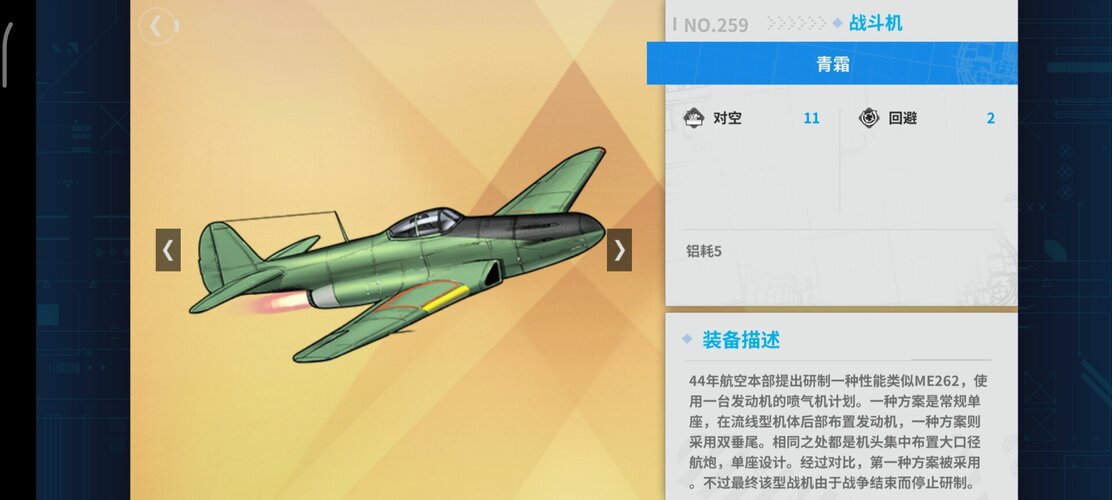
Similar threads
-
Fake Old Czech Jet Airplane Projects ?
- Started by hesham
- Replies: 12
-
-
-
-
Fake German fighter paintings by Marek Hlavaty and Yanick Dusseault
- Started by Vietcong
- Replies: 5

